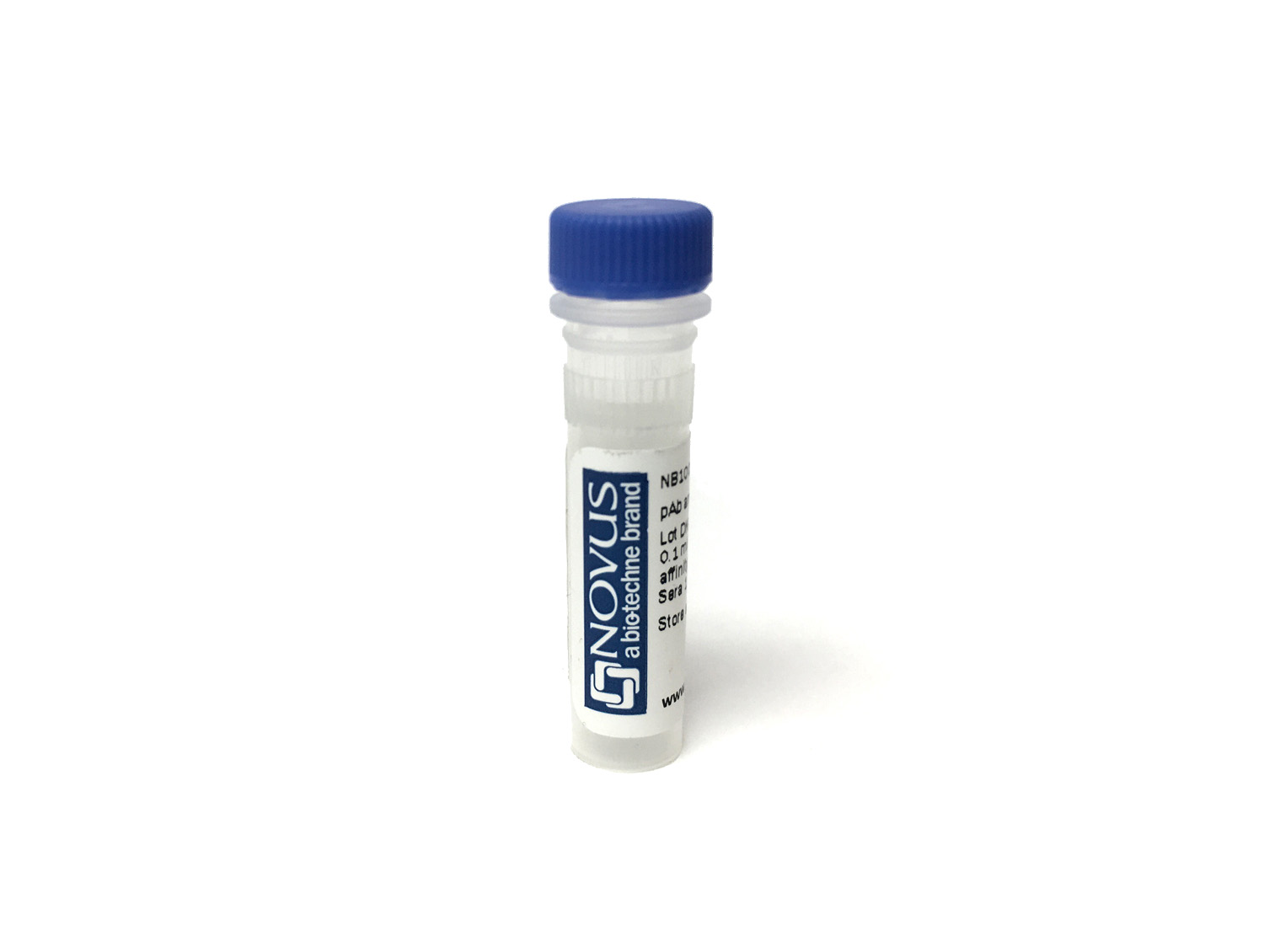MUC1 Antibody (Mc5) - BSA Free
Novus Biologicals, part of Bio-Techne | Catalog # NBP3-21450
Recombinant Monoclonal Antibody


Conjugate
Catalog #
Key Product Details
Species Reactivity
Human
Applications
ELISA, Immunocytochemistry/ Immunofluorescence, Immunohistochemistry, Immunoprecipitation, Western Blot
Label
Unconjugated
Antibody Source
Recombinant Monoclonal Mouse IgG2a Kappa Clone # Mc5
Format
BSA Free
Concentration
Please see the vial label for concentration. If unlisted please contact technical services.
Product Specifications
Immunogen
Human breast epithelial mucin
Specificity
This antibody is specific for the amino acid sequence DTRPAP of MUC1.
Clonality
Monoclonal
Host
Mouse
Isotype
IgG2a Kappa
Applications for MUC1 Antibody (Mc5) - BSA Free
Application
Recommended Usage
ELISA
Optimal dilutions of this antibody should be experimentally determined.
Immunocytochemistry/ Immunofluorescence
Optimal dilutions of this antibody should be experimentally determined.
Immunohistochemistry
Optimal dilutions of this antibody should be experimentally determined.
Immunoprecipitation
Optimal dilutions of this antibody should be experimentally determined.
Western Blot
Optimal dilutions of this antibody should be experimentally determined.
Application Notes
In an attempt to develop a reliable way to detect breast cancer, immunoprecipitation was preformed on NPGP from HMFG using the mouse version of this antibody bound to Sepharose 4B. Furthermore, this antibody was tested in an radioimunnology experiment on NPGP using the mouse version of this antibody (Ceriani et al, 1992; pmid:1377884). The epitope of this antibody was mapped by ELISA using small peptides - the murine version of this antibody was used (Petrakou et al, 1998 ; pmid:9422085). This antibody was used to identify cells expressing the MUC1 protein. This was accomplished by using the mouse version of this antibody on cell lysates of cell transfected with the MUC1 protein in a western blot analysis (Rubinstein et al, 2006; pmid:17145869). To compare the diagnostic usefulness of different antibodies, the mouse version of this antibody was used for immunohistochemistry on cell pellets from pleural fluid specimens (Creaney et al, 2008; pmid:18454162). While developing an antibody against the alpha/beta junction of MUC1 the mouse version of this antibody was used for western blot on the MUC1 protein (Rubinstein et al, 2008; pmid:18821582). While assesing a panel of 56 anti MUC1 antibodies for their ability to detect cancer the mouse version of this antibody was used for an immunoradiometric assay on a serum made from sera from 10 different patients with breast, ovarian or colon cancer (Norum et al, 1998; pmid:9422099). To more accurately determine the epitope of this antibody, an ELISA was performed using the murine version of this antibody on different small pepetides from the MUC1 protein (Karsten et al, 2004; pmid:15115750).
Formulation, Preparation, and Storage
Purification
Protein A purified
Formulation
PBS
Format
BSA Free
Preservative
0.02% Proclin
Concentration
Please see the vial label for concentration. If unlisted please contact technical services.
Shipping
The product is shipped with polar packs. Upon receipt, store it immediately at the temperature recommended below.
Stability & Storage
Store at 4C short term. Aliquot and store at -20C long term. Avoid freeze-thaw cycles.
Background: MUC-1
Overexpression of mucins, including MUC1, is a feature of many epithelial cancers (1,3,5,6). The presence of truncated glycan structures called tumor-associated carbohydrate antigens (TACAs) on MUC1 play a role in cancer progression and a loss of apical-basal polarity (5). Carbohydrate-binding partners called lectins are the primary binding partners of TACAs that give rise to the pro-tumor microenvironment and metastasis (5). Given this unique feature, TACAs are a potential target for cancer immunotherapies (5). There are a number of vaccines, drugs, and antibodies targeting MUC1 for treatment of a variety of cancers including breast, lung, and prostate (6). In addition to a role in cancer progression, MUC1, and specifically the CT portion, has been shown to have a positive, anti-inflammatory role in a variety of lung and airway infections (7).
References
1. Khodabakhsh, F., Merikhian, P., Eisavand, M. R., & Farahmand, L. (2021). Crosstalk between MUC1 and VEGF in angiogenesis and metastasis: a review highlighting roles of the MUC1 with an emphasis on metastatic and angiogenic signaling. Cancer cell international. https://doi.org/10.1186/s12935-021-01899-8
2. Nath, S., & Mukherjee, P. (2014). MUC1: a multifaceted oncoprotein with a key role in cancer progression. Trends in molecular medicine. https://doi.org/10.1016/j.molmed.2014.02.007
3. Dhar, P., & McAuley, J. (2019). The Role of the Cell Surface Mucin MUC1 as a Barrier to Infection and Regulator of Inflammation. Frontiers in cellular and infection microbiology. https://doi.org/10.3389/fcimb.2019.00117
4. Uniprot (P15941)
5. Beckwith, D. M., & Cudic, M. (2020). Tumor-associated O-glycans of MUC1: Carriers of the glyco-code and targets for cancer vaccine design. Seminars in immunology. https://doi.org/10.1016/j.smim.2020.101389
6. Almasmoum H. (2021). The Roles of Transmembrane Mucins Located on Chromosome 7q22.1 in Colorectal Cancer. Cancer management and research. https://doi.org/10.2147/CMAR.S299089
7. Ballester, B., Milara, J., & Cortijo, J. (2021). The role of mucin 1 in respiratory diseases. European respiratory review : an official journal of the European Respiratory Society. https://doi.org/10.1183/16000617.0149-2020
Long Name
Mucin 1, Cell Surface-associated
Alternate Names
CD227, Episialin, H23AG, KL-6, Mucin-1, PEM, PEMT
Gene Symbol
MUC1
UniProt
Additional MUC-1 Products
Product Documents for MUC1 Antibody (Mc5) - BSA Free
Product Specific Notices for MUC1 Antibody (Mc5) - BSA Free
This product is for research use only and is not approved for use in humans or in clinical diagnosis. Primary Antibodies are guaranteed for 1 year from date of receipt.
